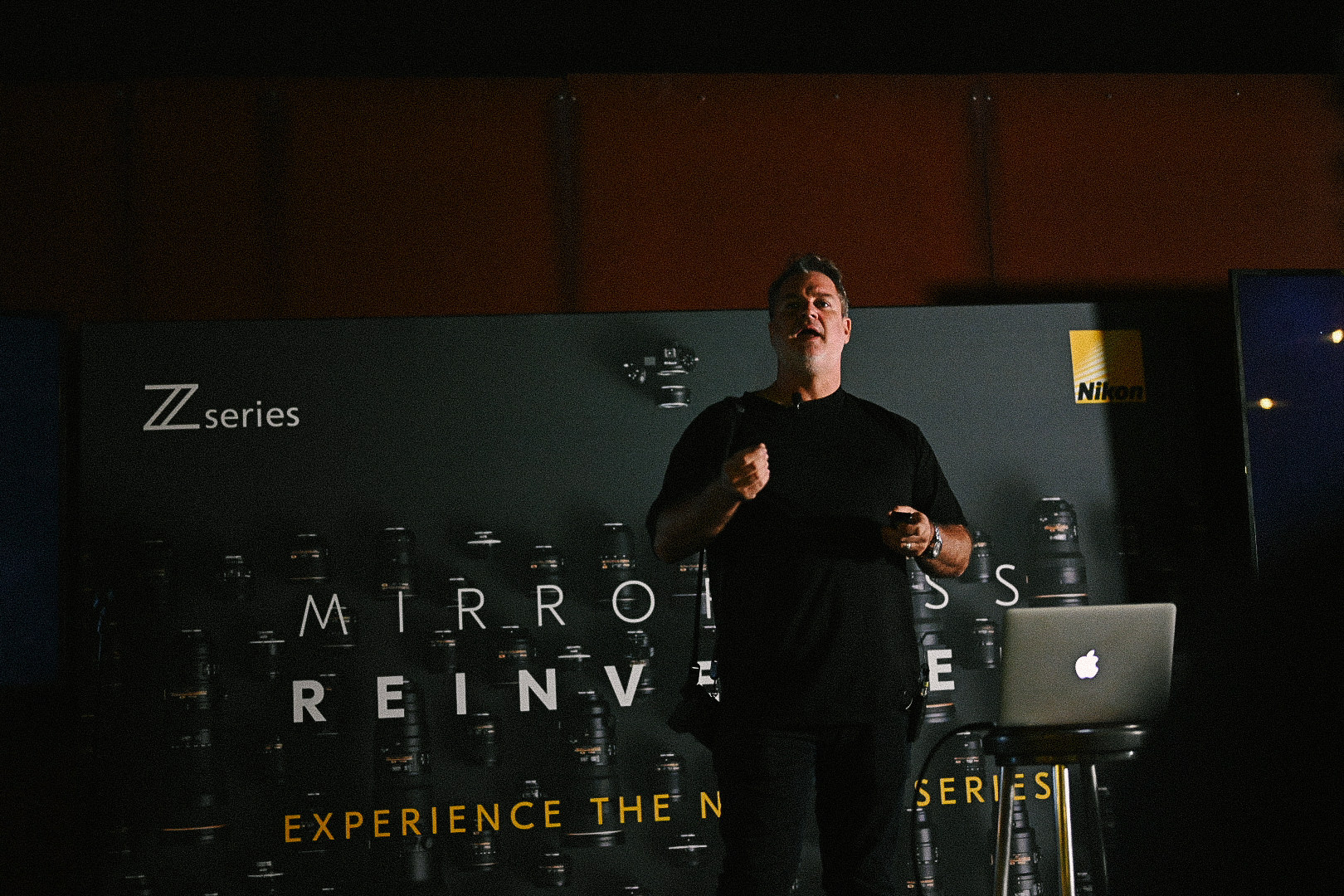
Nikon are currently mid-tour, travelling around the country for their Z Series roadshow showcasing the new Z7 and Z6 mirrorless cameras and lenses. I tagged along to the Gold Coast leg of the roadshow to meet the team, see these cameras in action and test them out for myself.

You’d be hard-pressed to find a better venue to accommodate a pack of eager photo-fiends than Currumbin’s Dust Temple. Nestled in an industrial estate, the cafe-slash-art-gallery-slash-event-space is a plethora of oddities, nooks, textures and varied lighting situations, both before and after dark. It offered plenty of photographic opportunities to test Nikon’s full range of equipment, available to borrow for the duration of the event and snap to our heart’s content throughout sunset and into the night.
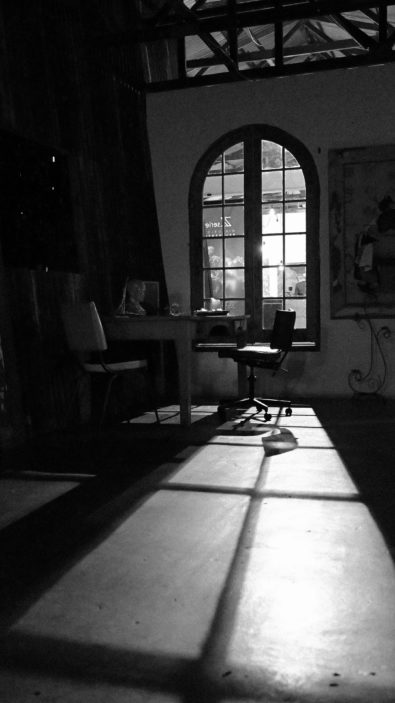
Full frame, small-bodied and built for performance, the Z7 and Z6 are the mirrorless answer to the pro-photographer’s prayers in terms of weight, usability and intuition. The Z7 is deemed “the perfectionist” with its 45 megapixel sensor and 495 focus points. The Z6 is nicknamed “the all-rounder” at 24.5 megapixels, 273 focus points, 12fps continuous shooting (in raw & jpeg). Both boast 4K ultra HD video and high frame rate 120p 1080 video.
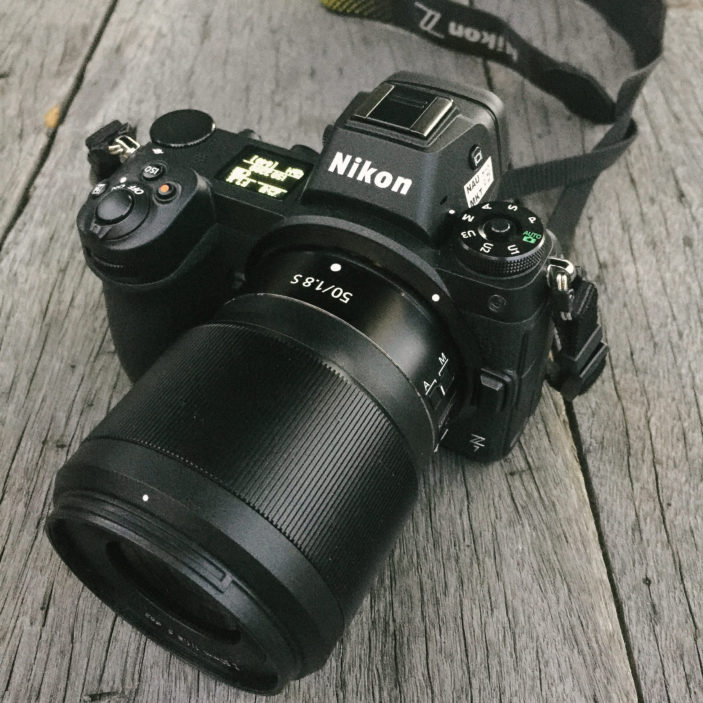
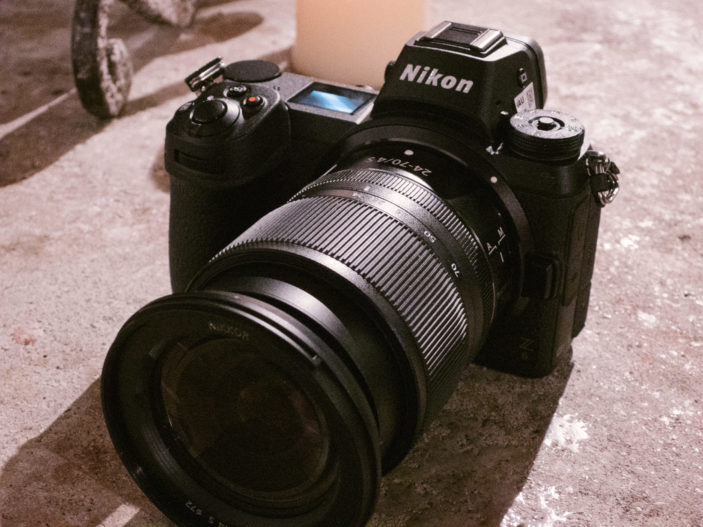
I made a beeline straight for the 45.7MP Z7, of course, eager to sink my teeth into the high-performance mirrorless offering. Paired up with the new Z series 50mm f1.8 lens, from the range designed specifically for the new wider mirrorless mount, I had my preferred setup for detail shots, portraits and atmospheric mid-shots ready to go.
For a little context, I still shoot with a pair of Nikon D800 D-SLR bodies – technology that’s now six years old, and I’m just now starting to feel the itch to upgrade. I’d never touched a Z7 before, and had only read up on its basic specifications online, but I picked it up from the hire desk and immediately felt comfortable finding my way around and quickly changing settings. I did notice the dials seem to operate in the opposite direction to what I’m used to, but that’s an adjustment you’d quickly adjust to. The electronic viewfinder is crisp and large, the grip is comfortable to hold – an important consideration for someone like me who often shoots for upwards of 12 hours on a wedding day – and it performs beautifully in low light, which is actually one of the Z6’s claims to fame.

It’s obvious that Nikon have taken on board all the feedback from their previous models and used it to make sure these cameras solve all the modern photographer’s problems. Beyond just tapping a tiltable touch screen to focus and shoot, silent shutter mode and being just as high-powered as a high-powered D-SLR, the Z7 and Z6 are customisable beyond belief. Most of the buttons can be programmed to act as a shortcut to your most-used features, which are also accessible from the “i” menu. These can be programmed completely separately for stills versus video modes, so the camera functions as a completely separate body depending on where the stills/video switch is set. In video mode, the focus area can be set to show red highlights, both through the LCD screen and the electronic viewfinder, to help you nail the focus in tricky situations. Unlike Canon’s EOS R mirrorless full-frame, the mini joystick hasn’t been sacrificed – it’s right there where you’d expect it, ready to help you quickly change your focus point. In video mode, the autofocus while recording behaves differently to stills mode – rather than changing from point A to B as quickly as possible, it smoothly transitions between the two points to allow for a creative focus-pull effect without having to adjust it manually. The list goes on.
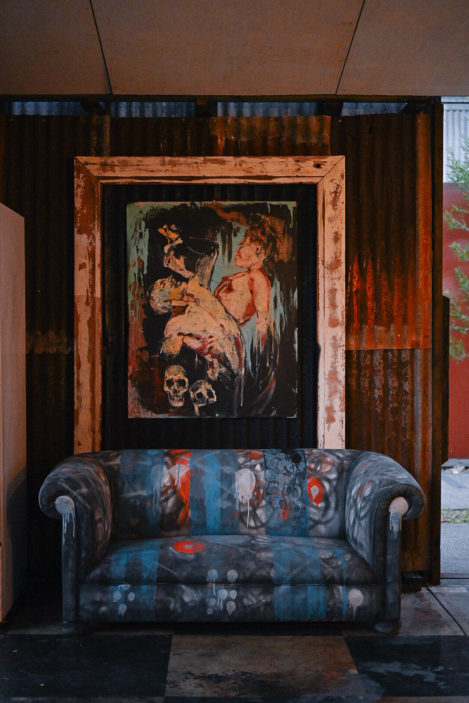
After plenty of mingling, munching on the many platters and snapping away, Nikon ambassador and two-time Australian wedding photographer of the year Marcus Bell gave us plenty of insight into how the Z7 has changed the way he shoots. He gave us a live demonstration, shooting tethered to a big screen, simulating a wedding shoot complete with model in wedding gown and a single continuous light. We, the peanut gallery, got to chime in along the way as each shot appeared, asking to see it zoomed in to 100% and how many shots can he get out of a single battery. I picked up a few tricks of my own to try at my next wedding – Marcus chooses to shoot on auto ISO and aperture priority mode, just using exposure compensation to change the exposure of his shot. The Z7 makes those decisions for him so well that he doesn’t need to, which frees him up to concentrate on composition and posing.
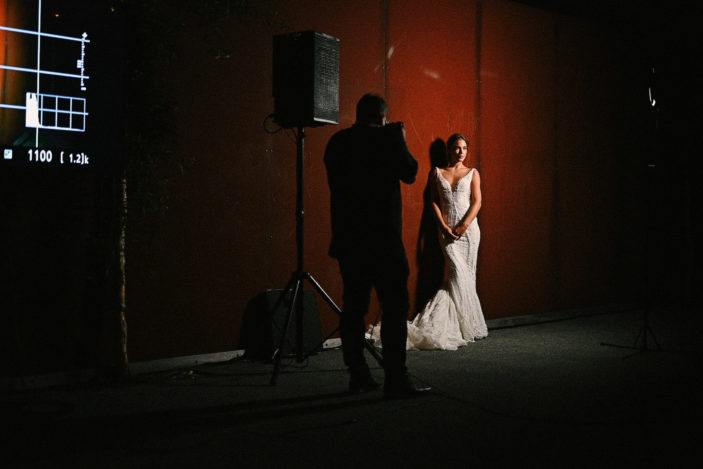
Nikon sure know how to throw a party, and their team are incredibly helpful and friendly. They were more than happy to help the eager testers, myself included, find our way around the new gear and transfer everything we wanted to keep. After shooting large raw files all night, I was feeling a bit lost with Nikon’s wireless transfer system – a system I can’t use with my D800s – but with the team’s help I was glad to be able to convert my raw files to jpegs in camera, transfer them to my phone via Snapbridge and bring them home for further inspection on a bigger screen. I would have loved to be able to see those raw files up close – something I’m looking forward to immensely when I get my hands on a Z series camera for an extended test period. Until then, the jpegs will do just fine, and you can see full size versions of all of them, including an ISO test where I pushed the Z7 ALL the way up, on Flickr right here.
The Nikon Z7 is available now, and currently retails for $5399.95 for the body only; $6199.95 bundled with the 24-70mm f4 lens; and $6299.95 with the 24-70 and adaptor for other F-mount lenses.
The Nikon Z6 is also available now, and currently retails for $3399.95 bundled with 32GB XQD card and card reader; $4199.95 with the card, reader and 24-70mm lens; and $4399.95 with the card, reader, 24-70mm and F-mount lens adapter.
